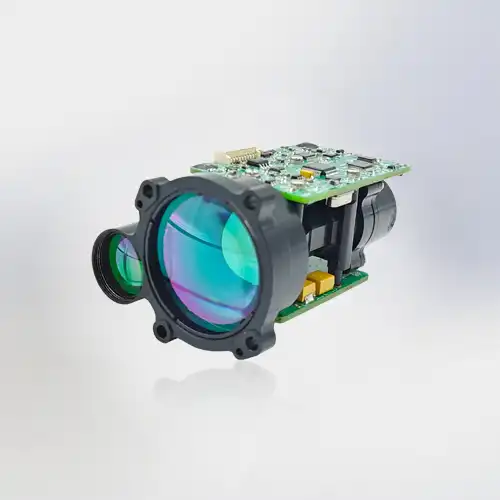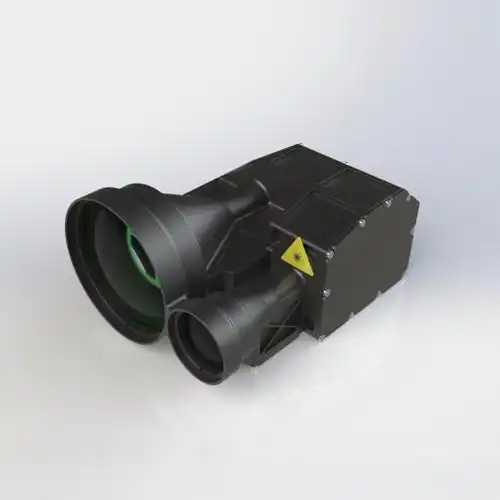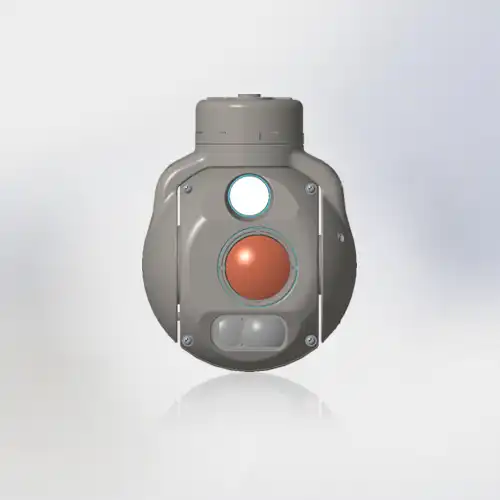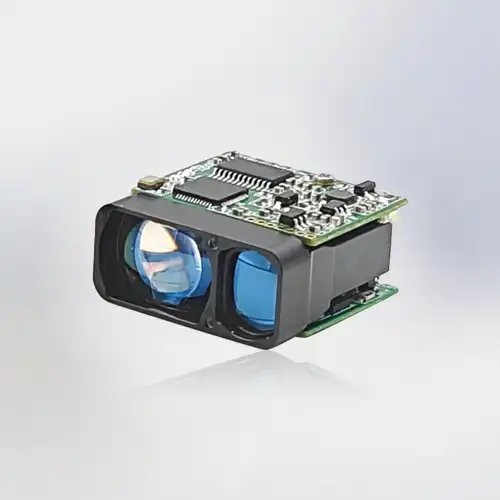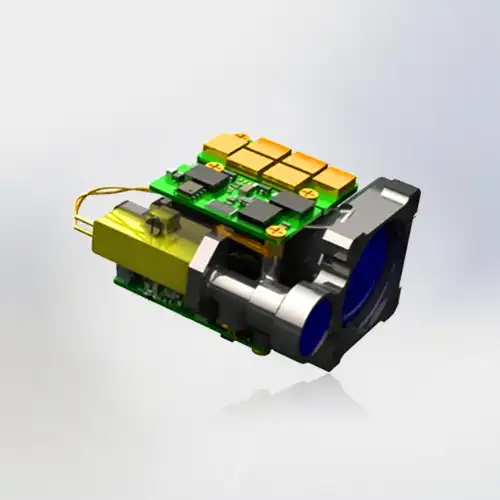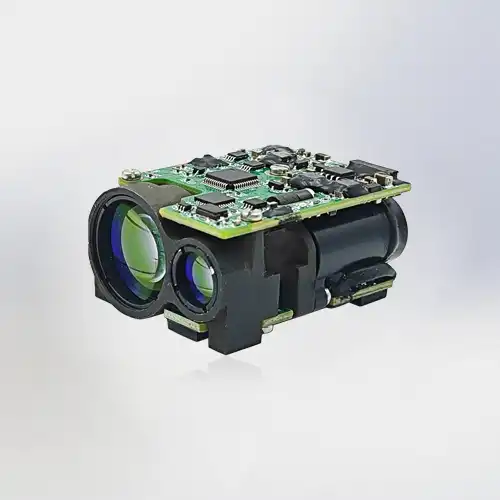What is the working principle of laser range sensor?
Laser Range Sensors (LRS) are sophisticated devices that measure distance by emitting a laser beam and calculating the time it takes for the beam to return after reflecting off a target. As a technology enthusiast with a focus on precision measurement tools, I find the inner workings of Laser Rangefinders particularly fascinating. These sensors are widely used across various industries for tasks that require high accuracy and speed.
Customer Concerns and Subtitles
- Accuracy and Precision: Understanding the level of accuracy and precision that laser range sensors can achieve.
- Types of Laser Range Sensors: Knowing the different types of sensors available and their specific applications.
- Environmental Factors: Considering how environmental conditions can affect the performance of laser range sensors.
- Integration and Compatibility: Exploring how laser range sensors can be integrated with existing systems or equipment.

Accuracy and Precision
The working principle of a laser range sensor is fundamentally based on the time-of-flight (ToF) technique. When the sensor emits a laser beam toward a target, the light travels at the speed of light, hits the target, and reflects back to the sensor. By accurately measuring the time it takes for the laser pulse to return, the sensor calculates the distance using the formula: distance equals half the speed of light multiplied by the time taken for the complete journey. This method enables the sensor to provide rapid and precise distance measurements.
Accuracy and precision are critical factors in the performance of Laser Rangefinders. Accuracy refers to how closely the measured distance aligns with the actual distance to the target, while precision indicates the consistency of measurements under the same conditions. Laser range sensors of a high quality are ideal for applications in robotics, construction, and surveying where accurate distance measurements are essential to successful outcomes because they consistently deliver precise readings with accuracy of a few millimeters.
Types of Laser Range Sensors
The working principle of a Laser Rangefinder relies on the time-of-flight (ToF) method. When the sensor emits a laser pulse towards a target, the pulse travels at the speed of light, reflects off the target surface, and returns to the sensor. By measuring the time taken for the pulse to make this round trip, the sensor calculates the distance to the target using the formula: distance equals half the speed of light multiplied by the time taken.
Time-of-flight sensors, phase shift sensors, and triangulation sensors are all examples of laser range sensors. Long-distance measurements typically make use of time-of-flight sensors because of their high accuracy over several kilometers. Phase shift sensors are excellent for short distances and high precision because they measure the phase difference between emitted and reflected light. Triangulation sensors are ideal for applications that require quick and precise measurements over limited ranges by utilizing the angle of reflected light to determine distance. Surveying, robotics, construction, and robotics are just a few of the industries that can benefit from each type's distinct advantages.


Environmental Factors
The working principle of a laser range sensor involves emitting a laser beam towards a target and measuring the time it takes for the reflected light to return to the sensor. This season of-flight estimation permits the sensor to precisely compute the distance to the objective. Notwithstanding, ecological variables can fundamentally affect the presentation of Laser Rangefinders. The sensor's ability to detect the reflected beam can be hindered by ambient light, such as sunlight or artificial lighting. Moreover, environmental circumstances like haze, downpour, or residue can dissipate the laser light, lessening precision. Changes in temperature may also have an effect on the speed of light in the atmosphere, which can make it harder to measure accurately. Enhancing sensor execution in various applications necessitates an understanding of these ecological factors.
Integration and Compatibility
The working principle of a laser range sensor is based on measuring the time it takes for a laser beam to travel to a target and back to the sensor. The sensor can precisely ascertain the distance to the article utilizing this season of-flight method. Laser rangefinders require careful integration and compatibility considerations for their various applications. These sensors can be incorporated into larger systems that require precise distance measurements for navigation and obstacle avoidance, such as autonomous vehicles or robotic platforms. Additionally, laser range sensors are able to effectively share data and seamlessly integrate with existing systems because they are compatible with other sensors and communication protocols like Ethernet or RS-232. They are more useful in construction, manufacturing, and environmental monitoring because of this interoperability.

FAQ
Laser Rangefinders are broadly utilized in different applications, prompting normal inquiries regarding their functioning standards. One successive request is the manner by which these sensors accomplish exact distance estimations. Using the speed of light for calculations, they operate by emitting a laser pulse and measuring the time it takes for the light to reflect back at the target.
The factors that can affect measurement accuracy is another common inquiry. Dust, fog, and ambient light, for example, may impair the sensor's performance. Users frequently inquire about these sensors' maximum range and resolution, which can vary depending on the model and technology used. Users can use Laser Rangefinders more effectively in robotics, automation, and surveying applications if they are aware of these fundamentals and limitations.
Conclusion
All in all, the functioning rule of a laser range sensor depends on the hour of-flight estimation of laser light. When the sensor emits a laser beam towards a target, the beam travels at the speed of light until it hits the surface and reflects back to the sensor. By precisely measuring the time it takes for the light to return, the sensor can calculate the distance to the target using the formula: distance equals half the speed of light multiplied by the time taken for the round trip.
Laser range sensors are helpful in development, studying, advanced mechanics, mechanization, and different fields because of the great exactness and speed of their estimations made conceivable by this innovation. Moreover, progresses in sensor innovation have expanded their accuracy and reach, making it conceivable to utilize them successfully in different indoor and open air settings.
Customers are able to make well-informed choices if they comprehend their types, working principles, and performance under a variety of conditions. Hainan Yiyang Technology Co., Ltd. is dedicated to providing high-quality, reliable, and precise Laser Rangefinders that meet the needs of various industries.
Call to Action
Hainan Yiyang Technology Co., Ltd. is a professional manufacturer and supplier of the Rangefinders, equipped with a large inventory, complete certificates, fast delivery, and strict packaging standards. We support testing and offer OEM and ODM services to ensure our products meet your specific requirements. If you are in the process of choosing your own Laser Rangefinders, please contact us atevelyn@eyoungtec.com for a customized solution.
References
1. "Principles of Laser Rangefinding." Measurement Science Review, https://www.measurementsciencereview.com
2. "Applications of Laser Range Sensors in Industry." Industrial Automation Magazine, https://www.industrialautomation.com
3. "Environmental Impact on Laser Sensor Performance." Sensors & Systems Journal, https://www.sensorsandsystems.com
4. "Integrating Laser Range Sensors into Automated Systems." Robotics Business Review, https://www.robotics-business-review.com
